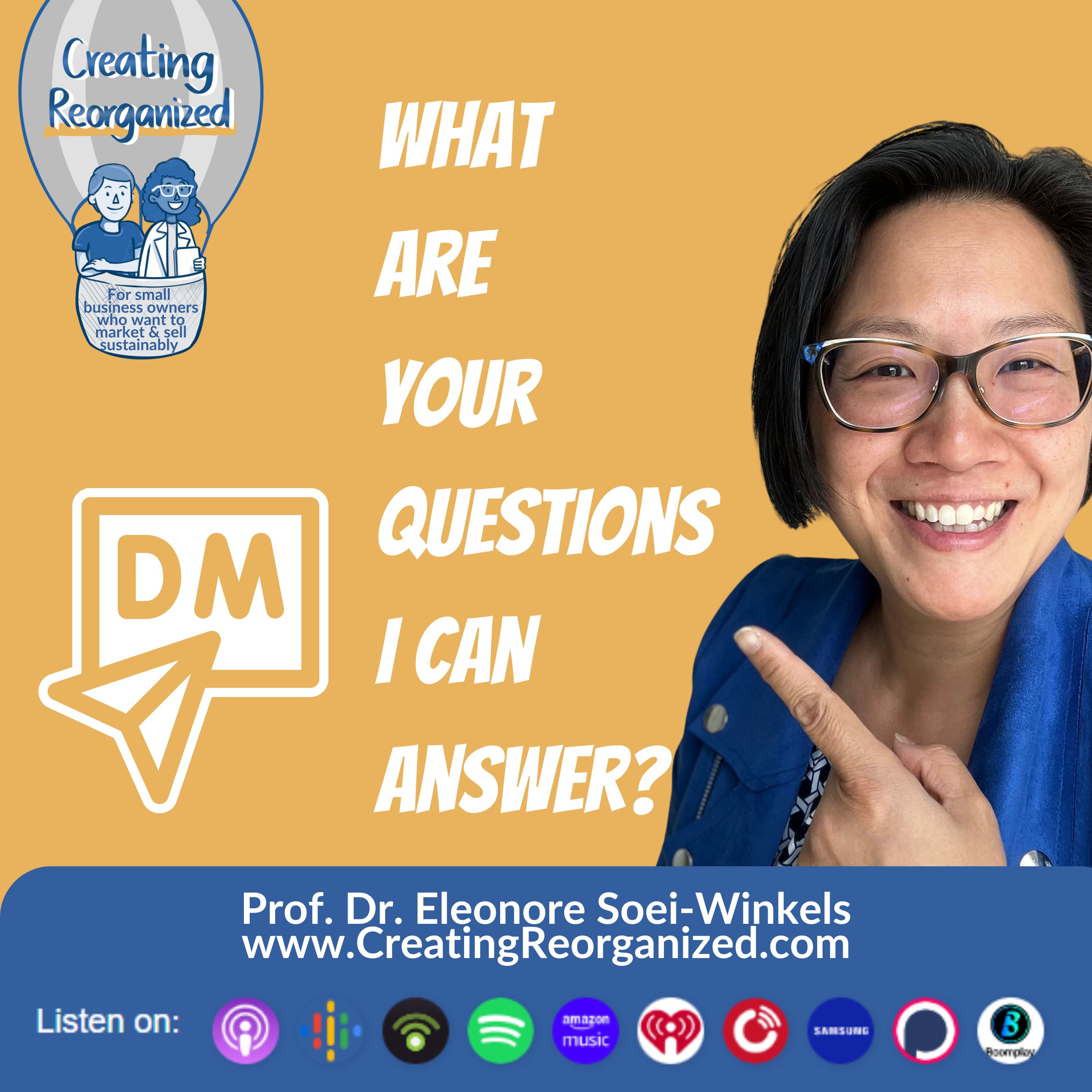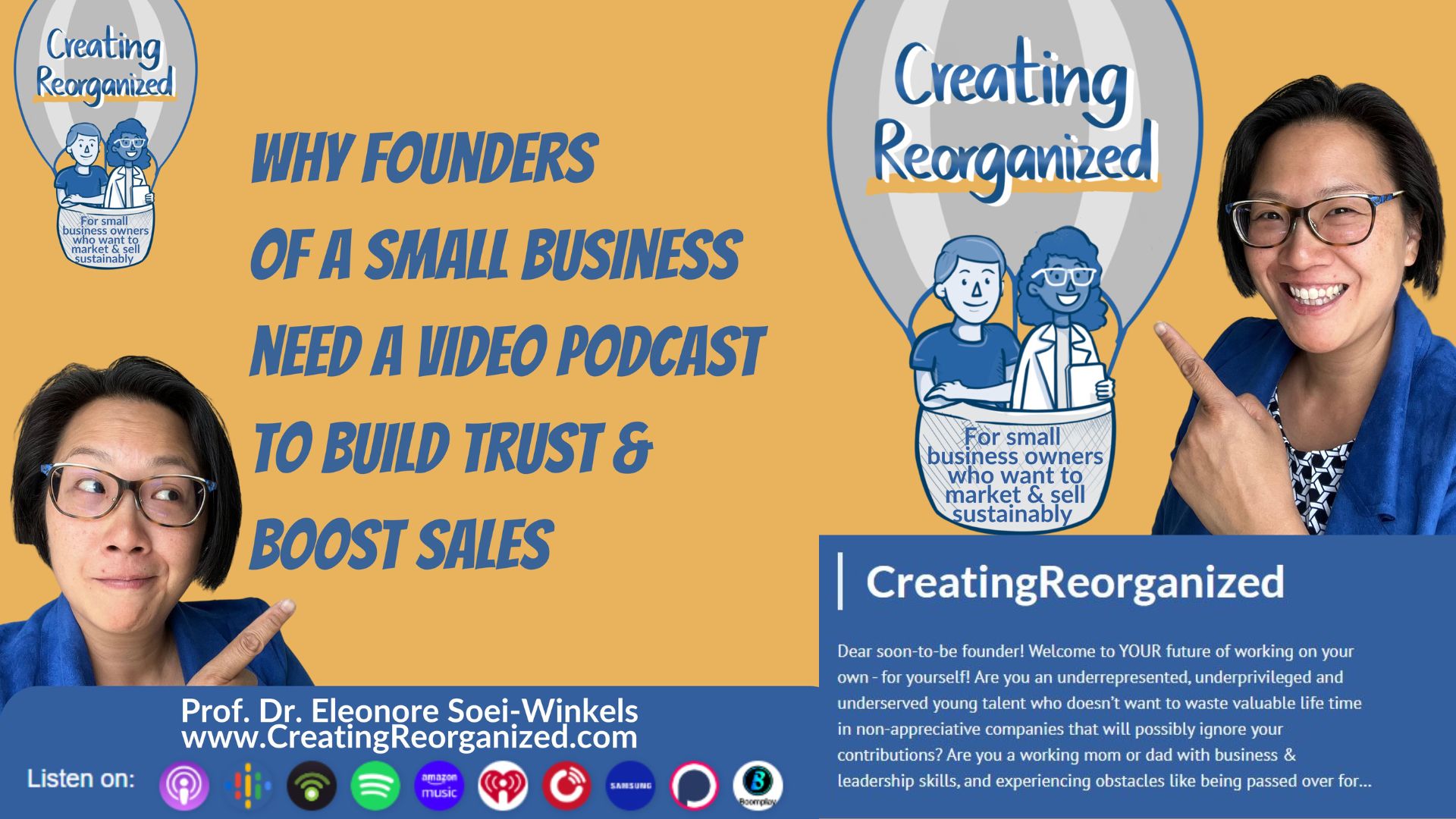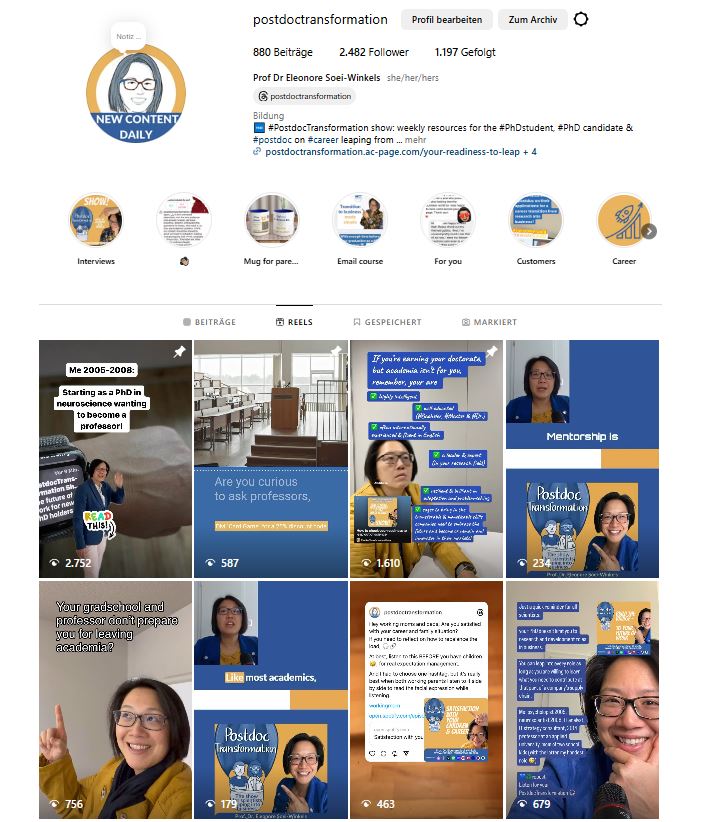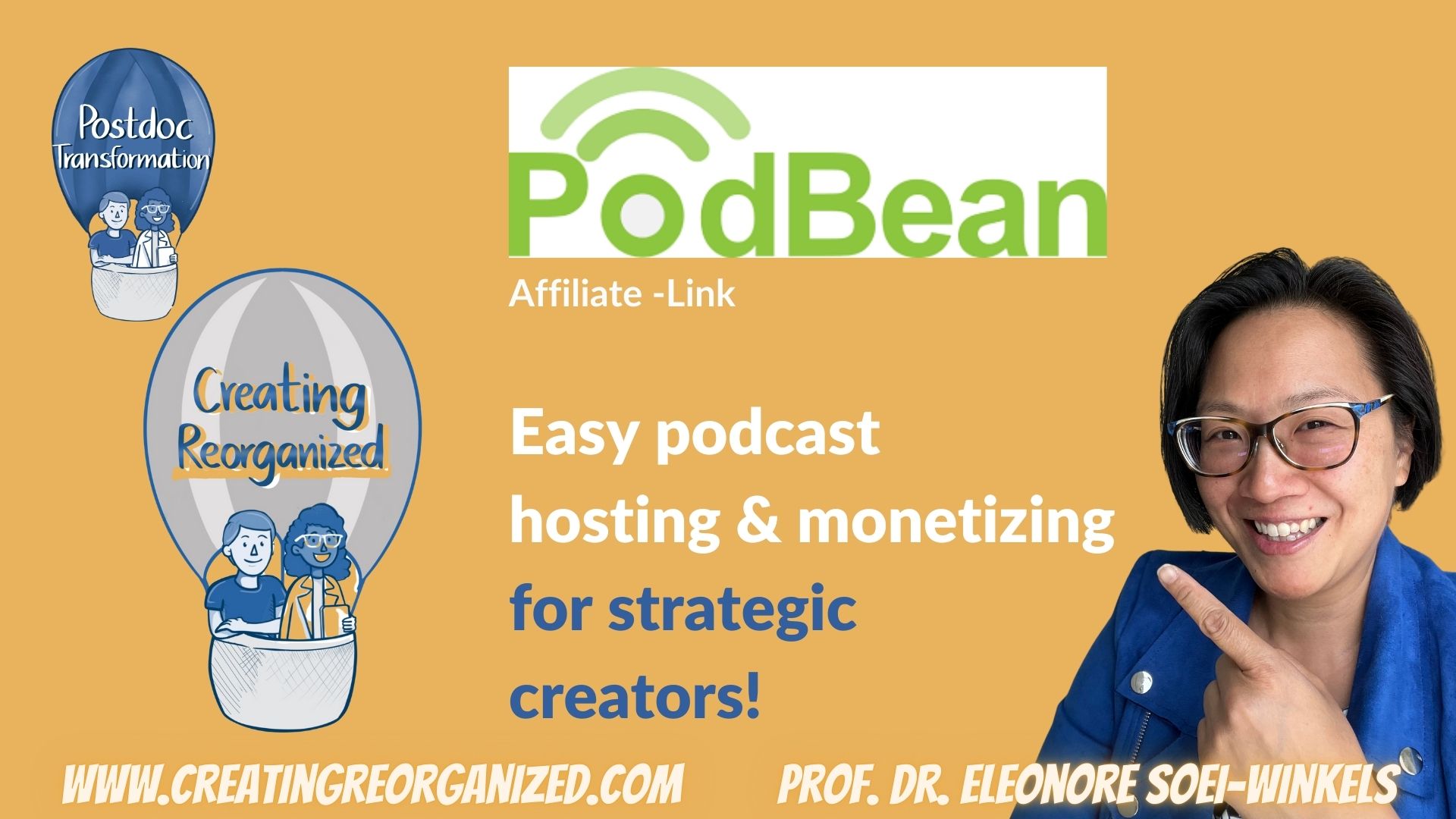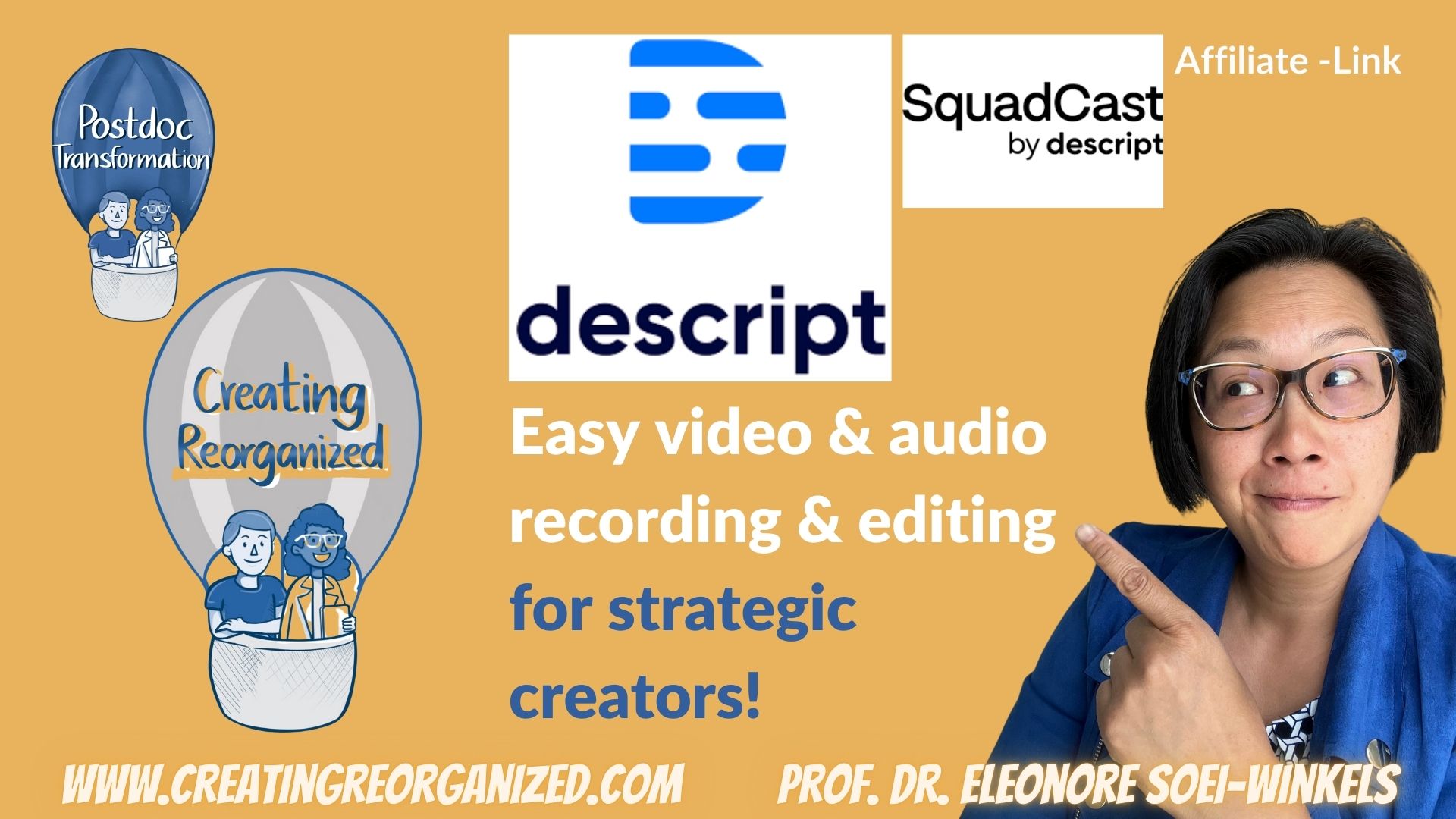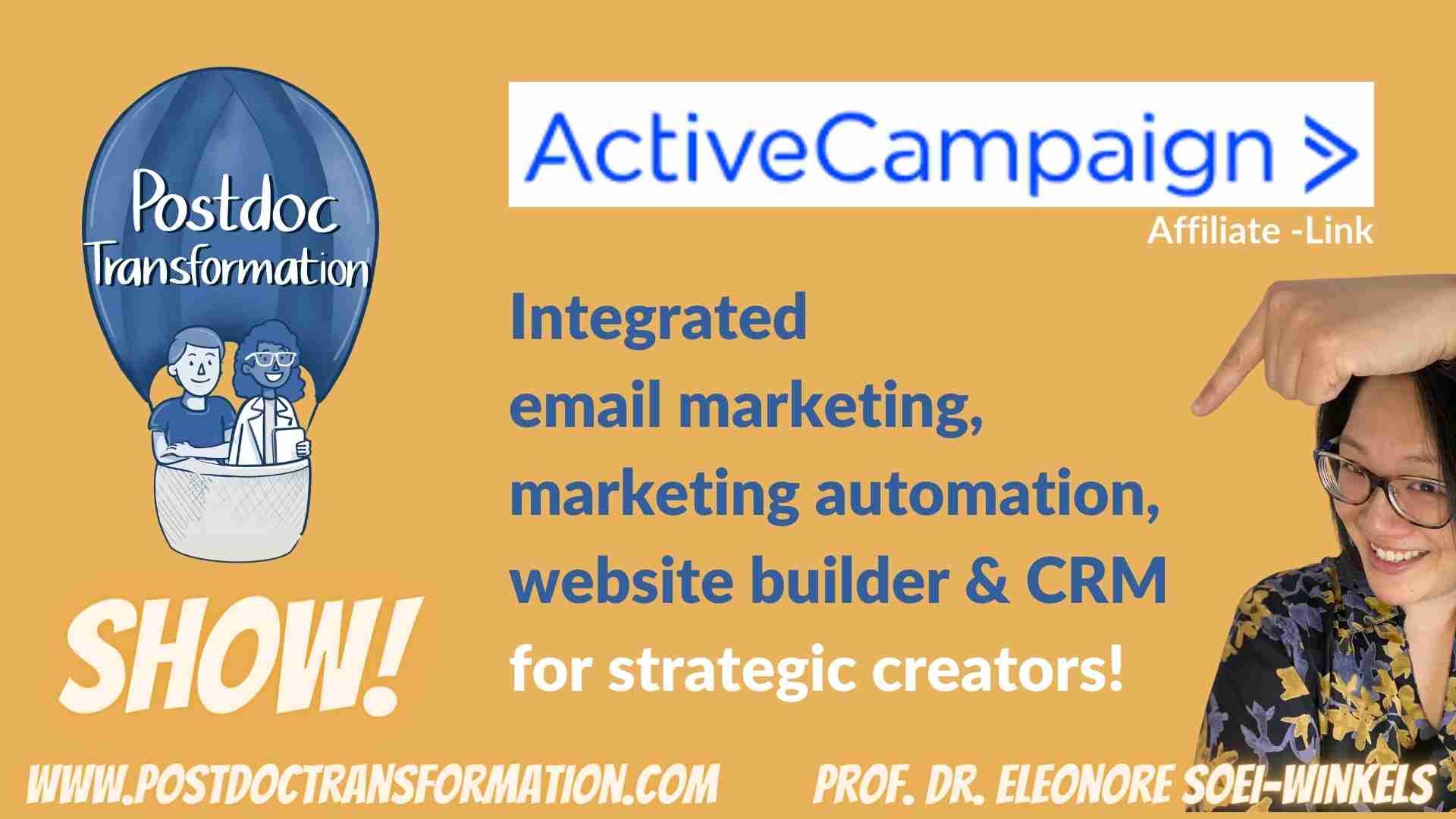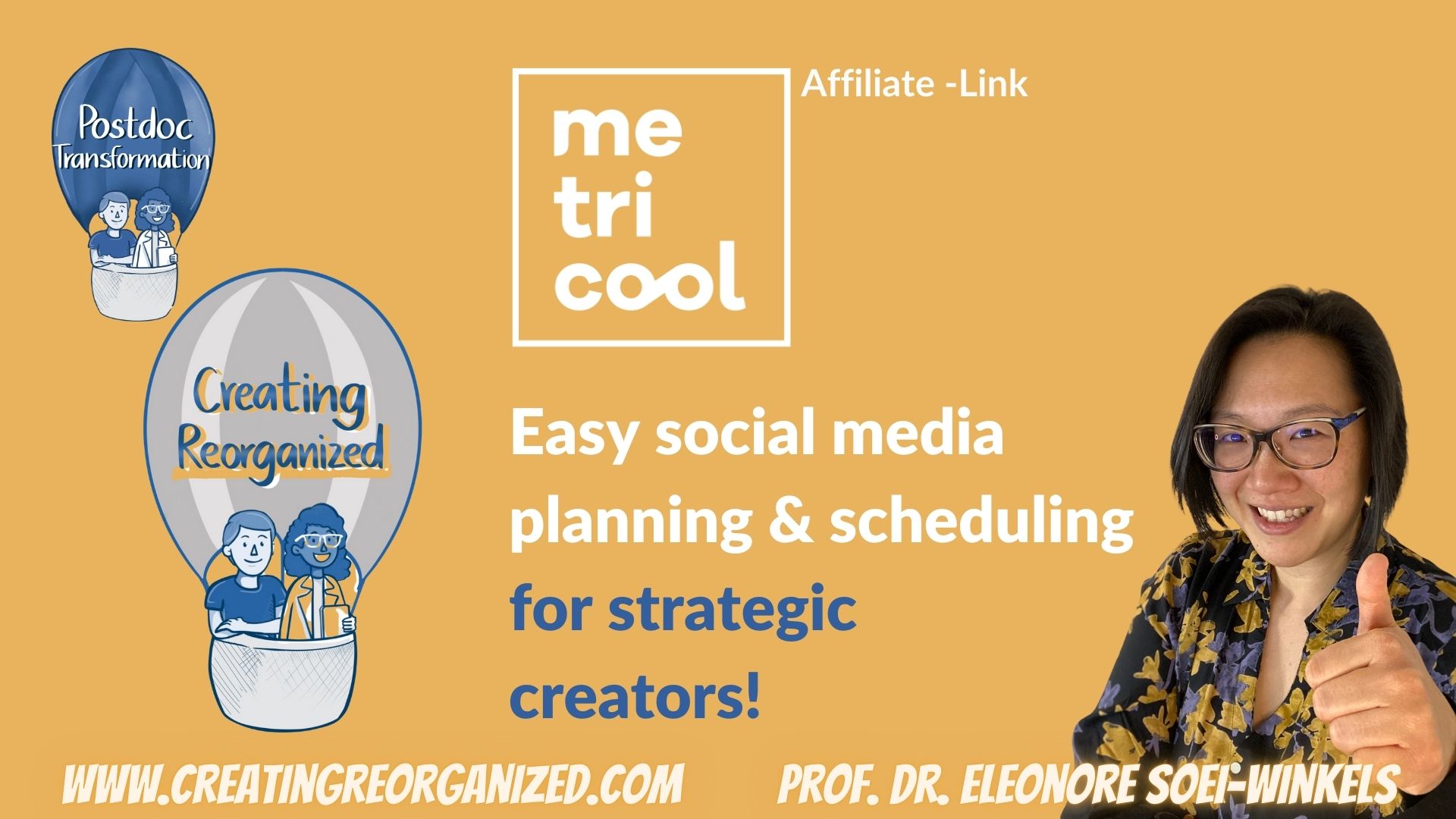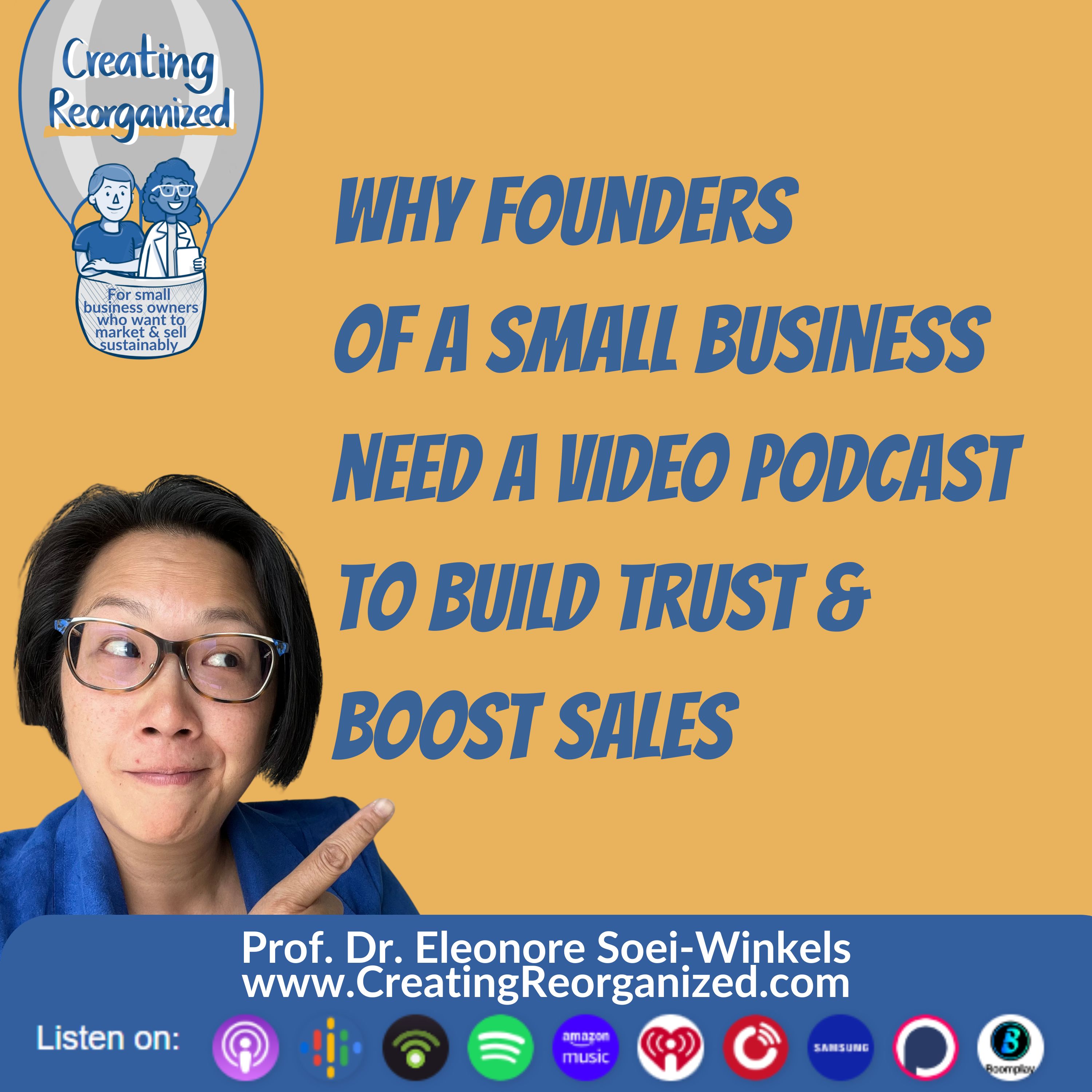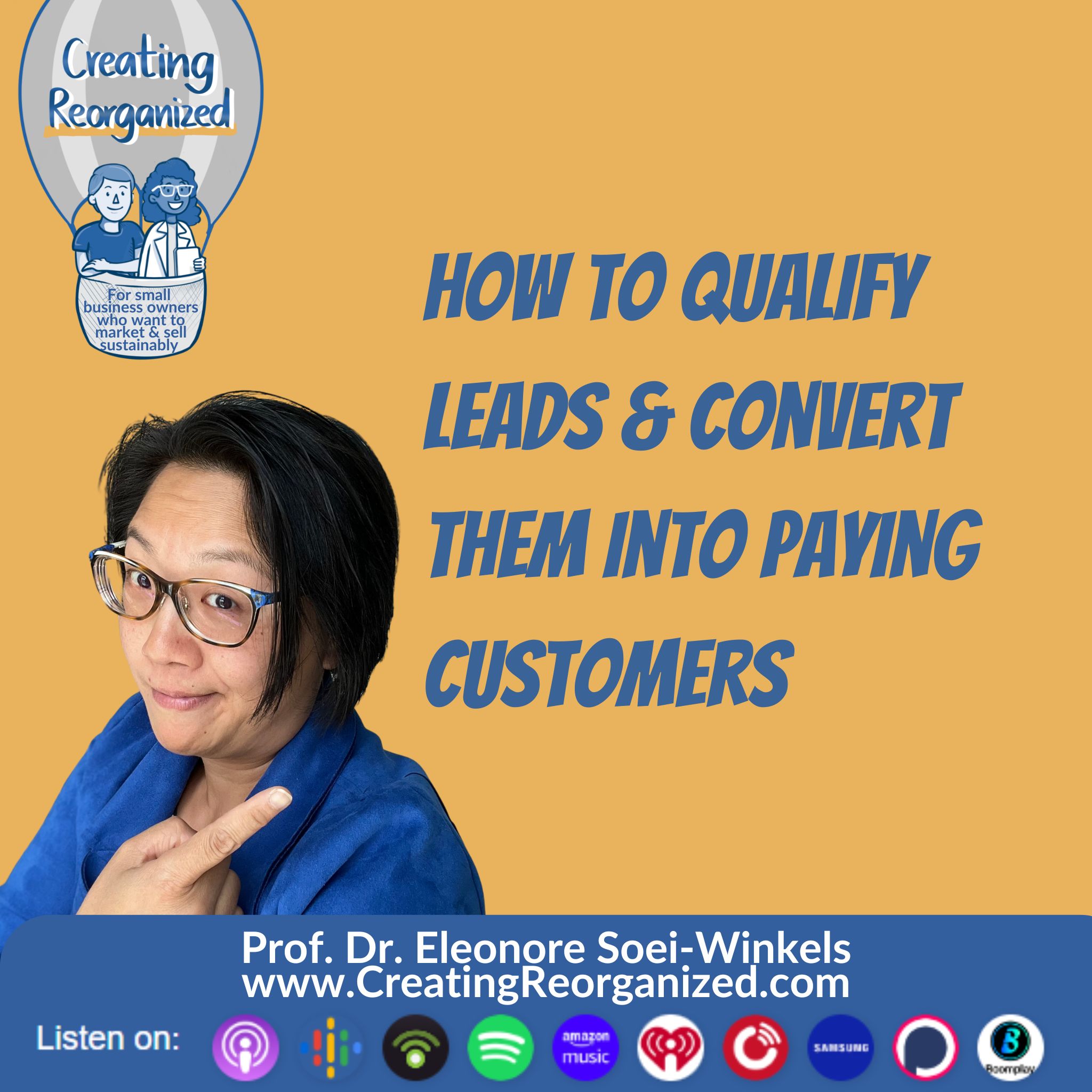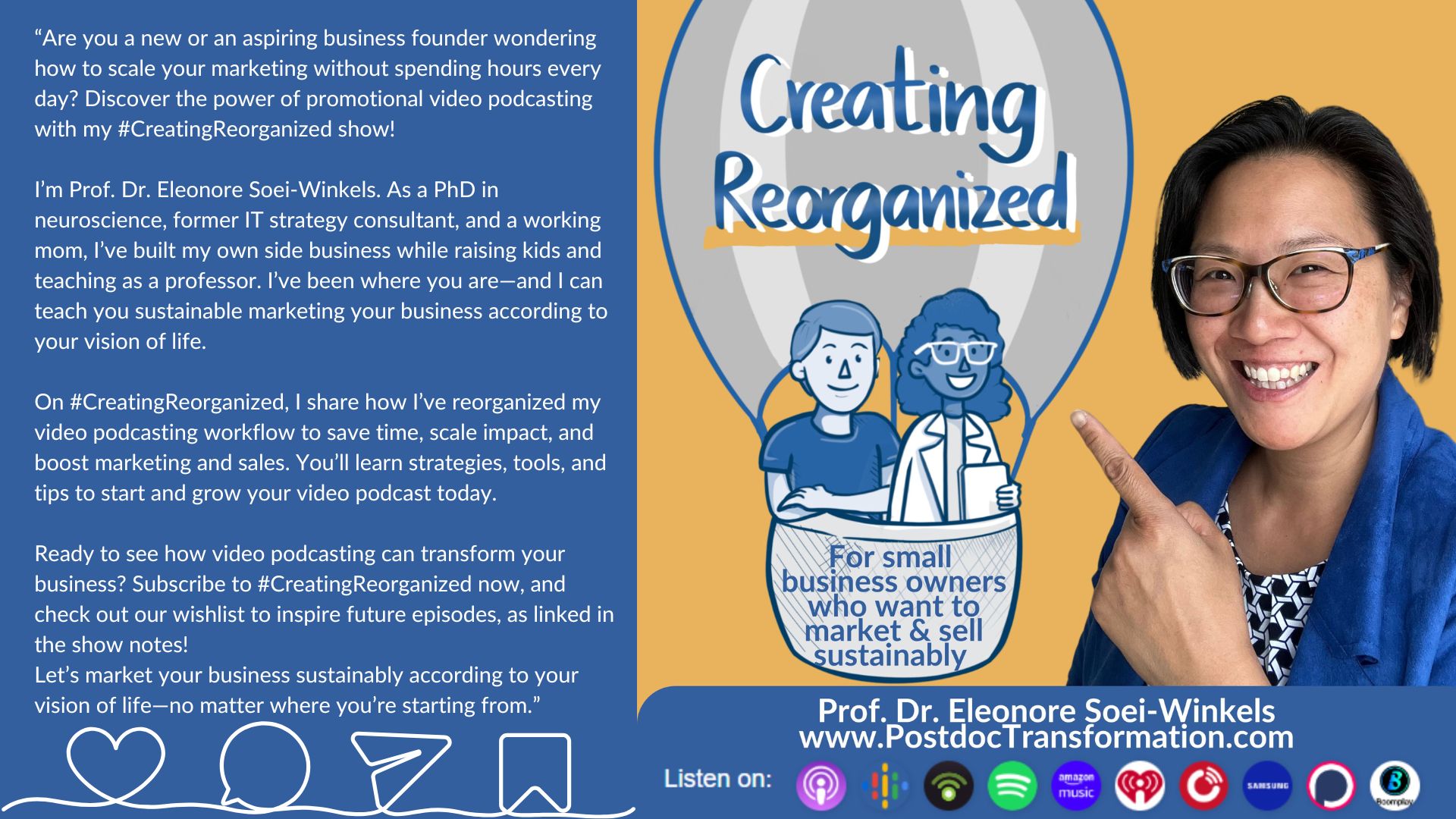
Best ways to showcase your products or services on a video podcast to drive sales,
CreatingReorganized show
In this episode of the CreatingReorganized show, Professor Dr. Eleonore Soei Winkels discusses how you as small business owner can effectively use video podcasts to showcase your products or services to drive sales. Drawing from her experience as a psychology professor, former IT strategy consultant, and host of the PostdocTransformation show, she covers why demonstration via a video podcast sticks more than looking at a still image or listening to a voice, key marketing concepts, storytelling and the scarcity principle, leveraging social proof, and actionable strategies to engage audiences. While she shares the making-of how she creates a demonstrational video, she dovetails psychological theories and concepts like Bandura’s social learning theory and declarative vs. procedural memory.
With practical insights into creating engaging video podcast content with tools like Podbean, Descript, Typeform, ActiveCampaign, Thinkific and Metricool, she offers a comprehensive guide to scaling marketing efforts while maintaining a work-life balance.
If you are a new or aspiring founder of your small business and have no time to waste, or really struggle to do your social media marketing, you will enjoy our #CreatingReorganized show!
In my day job as a psychology professor I teach my bachelor and master students in real life, how to reorganize processes in a goal-directed and future-proof way in companies. That’s what I had done for a living as a former IT strategy consultant.
For my own career coaching business on the side, I can only dedicate a fraction of my time – because I prioritize care work for my little children. I face the same or similar challenges like all small business owners. So, I applied all my experience and knowledge to create my other video podcast #PostdocTransformation to streamline my social media marketing and to boost sales of my coaching, e-courses and affiliate products or services.
I strategically capitalize on professional tools to scale my impact according to my vision of life.
Listen and subscribe to this #CreatingReorganized show, so you will learn to do the same for your own business, to build the know, like and trust factor and to boost sales of your services or products!
Please also ask your business-specific questions, because for season 2, I envision interview episodes with aspiring and new founders like you, if you want to get your #CreatingReorganized according to your vision of life!
Hi, CreatingReorganizer!
Welcome back to CreatingReorganized, the show that helps small business owners like you streamline, converge, and sustain your marketing and sales efforts—without feeling overwhelmed.
I’m your host, Eleonore Soei-Winkels, part-time professor, full-time mom, and a podcaster who's been in your shoes.
If you want to unlock the potential of video podcasting to showcase your products or services and drive sales, this episode is for you. we’ll break down the best ways to position your offerings in a way that builds trust, engages your audience, and, most importantly, converts views into sales.
We’ll cover:
Why video podcasts are perfect for showcasing products and services.
Key marketing concepts you can use to craft your content.
Examples of businesses that have done this effectively.
Actionable strategies and prompts you can use right after this episode.
As always, at the end of this episode, I will wrap everything up from a psychological method, theory or concept, so stay until the end of this episode. Especially, if you are my bachelor or master student in real life, I would love for you to take notes and maybe even already recognize my arguments.
Part 1: Why Video Podcasts Are Ideal for Showcasing Products and Services
Let’s start by understanding why video podcasts are such a powerful medium for selling products and services.
Here’s the thing: traditional sales channels like email marketing, blogs, and even ads have their limits. They’re often one-sided and don’t allow for genuine interaction with your audience. Video podcasts, however, thrive on engagement, storytelling, and authenticity.
Core Benefits of Video Podcasts for Marketing:
Visual and Auditory Impact: You can show and tell. Whether it’s a product demo or service walkthrough, you can visually and verbally convey value.
Long-Form Content: Unlike quick social media posts, podcasts let you dig deeper, addressing objections and showcasing benefits in detail.
Audience Trust: Regular listeners already trust you, making them more likely to consider your recommendations.
The ability to Repurpose: Your podcast isn’t just a one-time asset. Clips can be repurposed for social media, email campaigns, and ads, multiplying the impact.
And to let you experience my example, I will now play my own demo of using Descript, and their AI-feature: Edit for clarity:
If you already know it, you can jump to the next chapter marker within your podcast player.
But if not, I think that is a great example of how I try to walk in the shoes of my own customers
AI voice in Descript: Hi, this is the AI editor: Just to make clear, the following chapter is really a making-of video documentation of how Eleonore is speaking into the mic spontaneously and using the Descript user interface. This is a long session of unusual rambling-on, but informative, as it shows, that editing Eleonore is a needed [00:08:00] service to honor your time. Also, make sure, that you watch the video, to see all visual and audio effects Eleonore used to enhance the original recording. The inserted YouTube video is also embedded above, if you prefer to skip this for later watching and directly continue with the highly edited video podcast in the next chapter.
*****
A hook allows the listeners, the viewers, the audience, your students, to understand why should they listen and watch your video. For my students, I always say like, this is exam relevant and then everyone is like, wow, I want to listen to this. So my students love it.
Edit for clarity because your audience, your viewers, your students deserve crisp and well cut, well produced episodes of your wisdom in the sense of why they should listen to that [00:09:00] because social media can Teach us to create good hooks, right? I use Descript and also the AI tools a lot. So I'm a happy customer, also an affiliate partner, and I love to demo for you.
*****
You are maybe wondering, how did I get the clips? Well, I edited it for clarity, remember? So now I'll show you a short sequence of a seven minute or so video where I was rambling on, that was actually the basis for the two clips that I showed you before.
You'll be very happy that Descript AI has already transcribed all the seven minutes that I've been rambling on and on and on. So in the next video, I'll show you how it looks like as a result. Okay. So again, a seven minute video rambling on transcribed. So time lapse.[00:10:00]
All right. So now, uh, you can find me here. I did a screen recording, obviously from what I have been producing now, you can see this seven 30, seven minutes, something like, and it had been transcribed in like two or three minutes or so. I think that the transcription is well, which is not a surprise because I'm a heavy Descript user and for 95 percent of my.
Um, recordings, even for my name, et cetera, um, most of that, that really is, I can, I can take it as is, and then I could also remove the uns and the whatever. So there's also wordless media in there. So that's the dots and so on. So I could, I could cut that out. Okay. So, but I don't want to do this, but instead I now want to sort of like look at it from clarity point of views.
Like I said, [00:11:00] my audience, my students in real life. The Bachelor and Master's students of Industrial and Occupational Psychology, but also my postdoc transformers, the scientists leaping into business, and also the managing directors, the senior key decision makers, whoever, who may think of, do I want to sort of like invest in sponsored ads for my show, right?
So they deserve that I cut my best edits. Into one, so that it's more clear, clear, clear. Okay. So that again would be something that I would have to pass that I would have to cut and paste and together into a better version, because I'm obviously I'm from Germany, so not obviously, but I am from Germany.
So English is my second language. And that means. Editing for clarity is really a ha, is really a handy feature. Okay, good. Now [00:12:00] let's say I want to edit this for clarity. I go to actions. So this is the actions bar and I see AI actions, right? So I can do click on it and check for edit for clarity. Okay. So that's the third bar from here.
So again, I go to AI actions, which is here. Then I go to Ask AI. It's an AI action, so I ask AI, and then I go for edit for clarity. Okay, good. And then I say, um, edit this down to remove any speech disfluencies, um, repeated sections and tangents that distract from the core ideas. And I'll be. Very surprised to have it not cut it down from seven minutes to hopefully a lot shorter.
And then let's see how that works. I have to highlight this and then edit for clarity and then do this. Now AI is thinking. Fine. So now, [00:13:00] um, let's, let's see. Hi, my name is Anna Sue Winkers. All right. So have you ever started a video? Blah, blah, blah, right. Lost your train of thought. That sounds like me. I'll get to that later, but anyway, and I hope that this is much shorter, I don't know.
Well, let's see, looks very long, but, oh, okay, now you can see the strikethroughs, okay? So, that means That was probably when I was starting and thinking and had to restart again. Okay. Obviously, usually there are some strikers. You have two options, right? You can choose to delete the strikeouts and then you have sort of like, Jump cuts maybe, or finer cuts, and that is also okay, but you could also even record it again based on the edited script, so you'd have two options, right?
Okay, so I wanna, I wanna have both, [00:14:00] so copy edits to new compositions, so that means that I have the first version where I was rambling on, and then I have a second composition where I can play around to that, with that, right? So I've copied all that. And again, I'll have, um, AI edits and then, okay, so the demo
edit for clarity demo, that's the main topic. And then I did some AI edits. Okay. So let's see that. So that's seven. Um, the original was seven minutes and 34 and the AI edits were like six, 37. So, depending on how well I was doing, the last edits need to be made. I would say that [00:15:00] my rambling on was very atypical and I would honestly under expected, I would have expected.
A shorter edit at the end of the day, but let's see, maybe the second one, the 637 is really brilliant. Let's see. Okay. Um, I cannot listen at the moment because obviously I'm recording, so I don't want to listen at the moment, but I cannot read through that. Okay.
Okay. So most, I hit the most important things.
Okay. You know, all the new no's are away. So I always say so comma, and this is, this is, okay. To introduce your gas or whatever. So let's try another. Okay. So this is where I'm saying that's great. Okay. So, because I started to [00:16:00] sidetrack and to recommend another AI feature. And maybe that is Distracting and not helpful for my audience.
So the AI picked up that I was sidetracking or started to sidetrack and took that out or strike that out. Okay. That's great. And then I want to demo that for you at the end of the day, blah, blah, blah, blah, blah. So here again, that's great to take it out. I would have taken it out also if I had edited for clarity manually.
So that's great. And I think that's good to go almost. I mean, this is not, I'm sorry, this is not a robot for in front of the camera. Um, okay. Yeah. Why not? That's just for demo purposes. And obviously if you have real content that you are preparing and stuff like that, then it [00:17:00] will be helpful for being edited for clarity.
So now I have two options, really. I could use that and rerecord over on the, on top of that. So to like, um. I can, I can re record it based on what I'm seeing. So everything that had been striked out, I could re read that again. What I don't really like. Um, I just edit that out and I think that's a great first attempt to go through your.
One hour, two hour interview, which I actually do. I have one hour interviews, which I added down to a 30 minute, 40 minute episode. And then I insert also some other stuff like ads or other information or whatever. So that would help me to go through the raw content much faster. And I could, you know, drink a coffee or whatever, do whatever, play with my kids or whatever it is.
So I would say that this is a really handy feature and I would love for you to use Descript and the AI feature edit for clarity, and then you can. Obviously have some suggestions, strikethroughs that you can use for editing for clarity, and then you can choose to either re record or even use a stock speaker that's Um, employed to sort of like record phone in your own voice or in their own voice.
But you could also have, um, a clone of your voice. So that's another AI action so that you can train your own voice. Voice clone, so to speak. So I did this. I don't really like this at the moment. So I actually do like to be human on my podcast, but I can see myself being sick for a couple of days or weeks.
And that's when I would [00:19:00] edit my podcast. And sometimes I have to edit also my own takes because I hear an echo in my guest videos or audios. So I have to record that, but if my voice isn't good, then a voice clone. is good enough. Okay. I did this a couple of times and I think it's good enough. It's better if even, especially if I have time pressure or so.
So this is great for, for like, sort of like as a workaround, you could also have a Um, and AI speaker, um, like I said, it's, it's, um, it's an option that you can have in Descript. So there are a lot of AI features that you can use. And I really do think that the edit for clarity is a great start for you to use AI features on your own show, on your podcast, or also on your lectures.
Okay. So I hope that this, uh, episode or this, this AI edits from edit for a Clarity Descript demo will help you [00:20:00] to do the same for you. And if you have any questions, let me know. I'm an affiliate partner. I can also share my Descript link with you so that you have perks for your first attempt to sort of like edit for Clarity, because that really is a great future, great feature for all lecturers.
I guess that. Um, you agree with me only if you're really interested in editing for clarity, you would have gone through all the things that I have just shared for seven minutes, right? So yes, obviously I shared a couple of things that were really interesting. And also very helpful in the long run, but at the end of the day, you are probably grateful that I have cut out two clips that I have shared before, right?
I assume now that you understand that the two social clips that I created were much better than the whole rambling on that I have just shared with you, LOL.
A hook allows the listeners, the viewers, the audience, your students to understand why should they listen and watch your video. For my students I always say like this is exam relevant and then everyone is like wow I want to listen to this.
So my students love it. Edit for clarity because your audience, your viewers, your students deserve And well cut, well produced episodes of your wisdom in the sense of why they should listen to that because social media can teach us to create good hooks. Right? I use Descript and also the AI tools a lot.
So I'm a happy customer also an affiliate partner and I love to demo for you. My name is Eleonore Soei-Winkels, and I'm a professor for Industrial and Occupational Psychology. I'm a host and producer of the PostdocTransformation Show, the show for scientists leaping into business. And in that capacity, [00:22:00] I use Descript and the AI tools a lot.
AI editor in Descript: This is the Descript AI editor again. Yeah, you made it through Eleonore's rambling on. How did you feel being exposed to the uncut version? If you honor your leads' and customer's time, you will now want to edit. And here's an open secret. I am an AI, so I don't feel anything when I edit. When Eleonore edits her own material, she may feel bored, unmotivated or simply cringe and stop editing and it takes a long time. Using the Descript AI feature edit for clarity helps Eleonore to save a lot of time.
Marketing theory AIDA (Attention, Interest, Desire, and Action)
After this quick example of how I would demo Descript and also their AI feature edit for clarity. This brings us to the you to the marketing theory. AIDA.
Namely attention, interest, desire, and action. And here's how it applies. So far attention, you can use your podcast, intro and visuals to grab the audience's focus. Interest share [00:23:00] relatable stories and insights that show that you understand their needs.
If you don't have a client avatar, I recommend to listen to the first episode as well, where we think about the avatar . Then you have the desire and that is that you demonstrate how your product or service solves their problems and elevates their lives right. At the end of the day, you want to lift their status you want to make their life easier. End with a clear and compelling call to action. That guides them towards the next step so they know what to do next. Here's an example.
Think about a fitness coach selling a subscription based app. They could use, you know, their podcast to show snippets of workouts. The audio isn't really telling, but if you had video as well, showing the workouts and showing the environment of the gym, et cetera. will be telling a lot. So you can [00:24:00] share transformational stories, before and after, explain the science behind the methods, the reasoning, et cetera, and then you can end by directing the listeners to a free trial link. So that already qualifies your listeners, that they know, like and trust enough to use that link, so they're ready to implement what they have learned. And here's your actionable prompt. Ask yourself. How can you visually demonstrate the value of your product or service in under two minutes? Or longer. Or whatever. Like Like, for social media. You can, it's a very short thing, that's even better. If it's a complex thing, obviously you need longer. But the longer it is the less appealing, it will be probably. What stories or examples could you make your audience feel? need this.
Right? So, You have to make them feel that they want to buy your service.
Storytelling
Now let's go to part two key marketing concepts that will help you frame your product or service effectively in your video podcast.
So number one, and I already mentioned that in the second episode of our CreatingReorganized show, the power of storytelling. So, if you haven't listened to that, I link to it in the show notes, so you can check this out, but essentially people buy emotionally and justify in hindsight, logically. So you can use storytelling to connect emotionally with your audience. This is how you can do that.
Share your why, why did you create your product or service or whatever? Why do you think this service is needed? You're going to include customer success stories, what challenges did they face and how did your product or service help them overcome their problems? And you can use vivid, imaginary, and emotional words to make your narrative stick.
Right. So [00:28:00] don't be overly flowery, but you have to really speak the language of your customer. So here's an example, a small business offering handmade.
So here's an example If you were a small business that offers handmade products, you could share the story of a customer. Who's struggled with sensitive skin. For years until they find the perfect match in your product. And, obviously I am Asian. So for me, seeing white hands or darker hands than mine is not really relatable. So if you want to sell me something, then probably you need to have someone who looks like me for example, and that helps you to niche down. The audio wouldn't tell your skin color. But the video obviously shows that. And I think that is also a great benefit for that, because then you can create the same video with different models, so that they can relate better to your customer.
Here's an actionable prompt for you. Write a two minute story about a problem [00:29:00] your product solves. You can practice weaving it into your next podcast episode so you can see whether that resonates well with them or not.
Social proof by your customers and partners
And you can also, if you have already leverage social proof. I'm a psychologist. Psychologically social proof helps people to convince them to buy that thing or not. Right? It's a, it's a phenomenon where people look to others and to what's trustworthy and valuable. Okay. It's not just you telling them that it's valuable, but if, if they if they know someone who has already bought that and. If they know someone, oh, someone who looks like them who bought your services or products and is now successful. They think that they can also benefit from your products or services. to use it. You can include testimonials or case studies in your episodes. If you are like me having clients who don't want to share that they have used your services. [00:30:00] That's really hard, but maybe, you are lucky, and you can use. You don't. And you can use and share user generated con. and you can share user generated content like unboxing videos or reviews or something like that.
You can also, especially like in my case, mention any partnerships with universities where provide a service for their scientists leaping into business. So they don't have to unveil that they needed that service and that they use that service.
But instead the university steps up and says, yes, we have partnered with. Eleonore Soei-Winkels for the PostdocTransformation for example, but you've got to mention partnerships and certifications and also awards. For example, you could um, big name client or at least a relatable client.
And then have them share how your service has helped them to reduce cost and increase efficiency, et cetera.
So here's your actionable prompt. You can compile three or more pieces of social proof, reviews, success metrics, or customer stories. And then you can create a podcast segment where you showcase them.
The scarcity principle
And the next one is the scarcity principal. Scarcity creates urgency, motivating people to act sooner rather than later. And here's how to apply it You have an offer, limited time discounts or bonuses exclusive to podcast listeners. You can [00:33:00] announce limited stock or capacity for a service. In the podcast, but also on your website.
For an example, a business coach could offer a business coach could offer a discount, rate for the first 10 podcast listeners to book a session. And here's your actionable prompt create a special time sensitive offer for your audience. announce it in your next episode and track how many listeners convert and here's a pro tip. Do not bake that in the episode itself, because if it's evergreen, then obviously that time sensitive offer doesn't make sense, but instead, you could add this as an advertisement, so to speak. So that only when you have this offer, it's dynamically inserted into the episode. And once you don't want to have it. Offered again, you can just toggle it off.
Let's go to part of three. Let's explore real life examples of businesses that successfully use video podcasts to drive sales. And I want [00:34:00] you to look into your own niche. I bet there are already business as promotional podcast. Maybe they inspire you to create your own in your own language. For example, the most. Mo most podcasts, most podcasts are in English. However, I could also create a podcast on the same topics in German only because that is my native language.
You'll have to think of your own. You have to think of your own ideal client avatar. In which languages do they speak? For me, as for the scientist. Our common language is English. So it doesn't really make sense to create just a podcast in German only for career transitioning into business.
So it really depends on your niche. And I want you to look into your niche. Are there any podcasts that do something that you can emulate? And you know, you don't have to reinvent the wheel every time, but you can learn from them how they promote their services and products like online courses, affiliate tools, sharing case studies and success stories behind the scenes peaks. [00:35:00] Giving live demonstrations and offering lead magnets like free resources to hook their audience.
And while you listen and learn from them, I want you to reflect on the following.
1) How could your educational content build trust and primes listeners for buying?
2) How can you be authentic and relatable as the brand face and voice for your own business and company?
3) Which origin story can you tell to highlight your services and products' uniqueness?
And here's your actionable prompt.
I want you to research three successful podcasts in your niche. What elements could you include into your own strategy? For example, again, my PostdocTransformation Show is a [00:37:00] service-based and affiliate link based podcast. So I soft mentioned my own career transition e-courses and hard sell in my email list. So I'm not selling hard on my podcast.
The podcast is the first layer of communication, so to speak. If people are interested, then they would opt into my email list and this is where I continue to serve them. But I also eventually asked them to buy something because that is the ultimate solution for their problem. If they've gone so far with me, I already earned the right to serve them even better.
Activate declarative vs. procedural memory to boost sales
Now let's dig into the nitty-gritty. What are actionable strategies that you can use to make your own video podcast a sales powerhouse.
Well, as a psychologist I always differentiate between declarative and procedural knowledge. The knowledge that you can explain, declare is factual information. However, how [00:38:00] you do something that really is procedural knowledge.
And this is why you always turn to YouTube for how to do something like that. So, If you, as the host demonstrate how to use your product or service, that really is a service. You'll have to show don't just tell them what to do. You can walk your audience through how you use your product or your service step-by-step.
And in the era of AI, being human is key. Don't just overly perfect it right. I just want you to be human. That is what attracts people, not AI.
Just be you to build your own know like and trust factor. And here's a demo tip. And here's the temp and here's a tip for your demo. Keep your demonstrations, concise and focused on feet. Keep your demos concise and focused on key features. Do not overwhelm. You can use multiple angles from a camera for clarity and to avoid boredom.
So if there's something really important there, you can zoom in to make this little bit more.
If there's something important there you have to zoom in and then you can also go [00:39:00] back to the angle of talking to the camera.
Here's an example, a food blogger could demonstrate cooking with spices while sharing tips, so it could be showing something. And then it goes into the B roll mode, so to speak.
You can also create interactive segments. Okay. So you can engage your audience by answering a few quick. You can create interactive segments. You can also host live question and answer sessions and you can share listener, submitted questions.
You can also create a community to foster commitment, provide feedback and allow accountability. And here's a pro tip. You should always.
Lead. Your customer on a value letter and on you should always lead your prospective client on a yes ladder Okay. So you need to address common objective to your product or service. You can feature real customer questions for authenticity.
And this is the fun part, which you, again, get when you always ask for feedback. Right? I always ask my people. to provide feedback in the DMs but also in a form, et cetera. So I can pull from that. And [00:40:00] then say, these are the top five challenges our clients face, and that is why our services, our products solve that problem. Do not forget to always include a call to action.
For example.
Visit this website link also in the show notes to learn more. Get 10% off with the code podcast 10 or whatever. Sign up for a free trial today. Get prepared with a quiz, whatever. These call to actions should always be nestled within our naturally within the content. And you can link to them in the show notes.
Or do you want to check out my expertise first by signing up to our CreatingReorganized inner circle newsletter, where you can learn and apply my tactical tricks to your marketing challenges and see how business podcasting can help you strategically to reach your goals
Sign up now via this form (made in ActiveCampaign):
If you have a video as well, you can always use [00:42:00] visual overlays or a captions in the video.
For example, when I use Streamyard I always have a banner while we are talking, while y'all listening to me, there is a banner at which. You can even click on all which is prominently showing my Instagram or TikTok profile or the quiz that they can use to check, whether they're ready to leap out of science or not. And if you are. If you are, for example, a personal trainer, you could always like ready. Like do your exercise. And then ask if you're ready to start your fitness journey, check out my four week beginner program. Via the link in the show notes.
And a talking head video is somewhat entertainment.
I don't know, but you could always use that as a billboard. Like I say, you can leverage graphic, overlays and animations and for your brand identity to reinforce your points. For example, in my solo episodes, when I talk about something and I clip out why I don't know. Let's see, admit a video or a one minute video or so. Then, obviously the cover art is important for the episode, but [00:43:00] once the people have watched it, for one minute or so.
They don't want to watch it for one minute or three minutes. But instead I said, I'm like, I saw it, but instead I sort of have a carousel. In the. lower or the top bottom of the vertical video. So that's sort of like, allows the viewer to learn that I have other episodes as well.
What other images can you also use instead of podcast cover art? Well, you could add before and after images, charts or infographics. And again, just a reminder, always use branding elements like your logo, your fonts and your color. For example. If you are a financial advisor, you could use graphs to explain how your services lead to a better investment outcome, obviously.
So if you are a scientist, science communication via graphs and diagrams is also very, no very natural.
See my Instagram for more examples of B-roll in social media clips:
If you are longer in the business already, and you have successful clients or business partners, then you can collaborate with them. You can invite them to your podcast because their testimonials carry weight.
For [00:44:00] example, if you are a wedding planner for, I don't know. Then you can invite a past client to share their experiences and show wedding photos or videos. If they want I mean. Maybe you do it half price for them, but. Ask them for being a testimonial, something like that. So in my PostdocTransformation Show, for example, I interviewed two scientists from PhDSciCom, and we even included some of their Instagram videos in the final podcast episode.
And here's your actionable prompt. Choose one of these strategies and outline how you would implement that in your next episode.
A psychological model, concept or theory applied to podcasting:
Bandura's social learning theory
So as promised at the beginning of this episode, let's wrap everything up from a psychological method, theory or concept point of view. If you are one of my bachelor or master students in real life, please comment in your podcast player, which psychological models theories, or concepts would also have been applicable.
So now let's apply social learning, by Bandura, 1963.
Through social learning, through [00:45:00] role models, efficient and effective success, critical goal directed behavior can be learned, and then, later on, executed.
And your podcast supports the process of learning that your service or product helps your clients solve their problems. As they later execute using your service or product for their solution, they capitalize on buying your service or product. To make social learning successful, you need to think of the following. For the listening experience in your podcast, two aspects are relevant for your listeners attention and memory.
1) You need to hook your ideal client avatar attention. The more relatable and powerful you are, the more your listener will want what you offer as a solution for that problem. And the more you will be the role model.
And that's why you need to be role modeling significantly [00:46:00] and aligned with their goals. If you, and they share the same goals, they will want to follow you. They will want to be like you.
2) You need to help them remember why. Okay. So don't tell them a lot of things they don't remember, but you have to help them remember why, how, and what they need to do to solve the problem. That's why you may explain your service and even demo your product via video and audio. The better you can create declarative and procedural memory for them, the better they can remember your service, our product as the go-to solution.
Emotions are the glue for learning
So you need to describe and show your service and product in an emotional way.
Remember that I said, emotions are the glue for learning.
I said that in episode two of our CreatingReorganized show. And that's also the leeway. And that's also the leeway to highlight repetition, just because you said something once, that doesn't really mean that your listener will remember you saying that. Podcast listeners also do other things, while listening to your podcasts? Right. So I do the same. You probably do the same.
You're. I'm not just listening to me intently, but instead you'll probably be cleaning the dishes, doing the household are whatever you're doing, waiting for whatever. Maybe are running even so you can't take notes. So. As a podcaster, you need to repeat your message very often. So this way, if you don't want to sound like a broken record, you could do [00:49:00] this also via dynamic ads for your own services and products, you can teach them in your ads as well. And that's quite repetitive. But it really serves increasing the memory of why, how and what they should do to solve their problem.
Do you remember that I said your podcast supports the process of learning about your promised solution? As they later execute using your service or product for their own solution, they capitalize on your service or product. And it could be that this is months, years at a later stage of life. Even if that is much later in the future, with your podcasts, you want to move your listeners from 1 curious explorers to 2 engaged learners and 3 potential buyers.
And if that doesn't ring a bell, please listen to our second episode on how to qualify leads and convert them into paying customers as linked in the show notes and see. [00:50:00] I just did that again. I repeated an important lesson across two episodes.
You need to prepare your potential buyer to achieve success in the most probable way. So, how can you achieve that? Well, you need to be realistically describing the realistic. So you can be. In your podcast, you need to be realistic describing the required skills to master the task again and again. The more, they have this expectation that they are able to execute, the better it is. And if they have skill gap, you need to upskill the listeners to be able to execute successfully, but you want to tell them from the get-go that they need to level up. That is the expectation management that helps them to be sort of like trusting you, that they don't have this magic solution, but they know what they have to commit to.
And then you can have a free webinar. Where you can provide initial feedback. Or even a paid exclusive [00:51:00] community where you can provide advanced individual feedback because feedback really matters to become more confident in believing that your solution really can help them and that they are able to execute that as well.
And to see other buyers of your service, left and right how they master their relatable challenges will motivate your listener to buy and capitalize on your service and products as that solution of their problems. So here's your action point. Can you think of a free webinar that you can create for your niched down ideal customer? So you can teach them a basic version of your service or product. This way they can get the taste of the full solution.
Okay. To recap, video podcasts are a game changer for showcasing your products or services. By combining storytelling, social proof strategic calls to action and engaging [00:52:00] content. You can drive sales authentically and effectively. And here's the challenge for today. After listening, pick one strategy we discussed and try it in your own next episode. And let me know how it goes by emailing me or connecting on social media. I would love to hear about your successes and maybe also open questions. So then we can address them in future episodes.
If you haven't, please also listen to our first episode on why founders of a small business need a video podcast to build trust and boost sales.
And our second episode on how to qualify leads and how to convert them into paying customers as linked in the show notes.
To celebrate this season of the Creating Reorganized show, I want to offer you a business podcasting internship for four weeks. You can apply or join the wait list for the next season for this treat by sharing why you want to do a business promotional podcast. What your services or products are. And [00:53:00] if you and your business are in line with my own values, I will strategize, conduct, and produce with you your first three episodes.
For the first one, I take the lead and you shadow me. For the second one, you do the work and I help you out. For the third one, you are on your own with me, cheering for you on the sidelines. For more details, click on the image below to send me an email and we will send you the application details.
Do you want to start your own site business as a runway for your better future? Then you will benefit from our free business readiness quiz as linked in the show notes. Are you a small business owner and want to create sustainable marketing and sales content? Try video podcasting about your service or product like I do in my postdoc transformation show.
I'm a mom of two kids in school and a professor and I have no time to lose running my business. And if you also want to save time and energy, use our dovetailed [00:54:00] evergreen strategy. You can easily derive countless valuable social media content from just one video podcast episode. You can quickly attract a broad audience across many social media platforms and then nurture them into leads and clients in their ears and emails while you live according to your vision of life.
Let me teach you CreatingReorganized. If you're ready to dive in and start your own podcasting journey, I highly recommend checking out the tools I mentioned earlier: podbean, Descript, Typeform, ActiveCampaign, Thinkific, and Metricool. Each of these services has made my podcasting business experience smoother and more efficient, and I trust that they can help you too.
Thank you for listening to our CreatingReorganized show. If you found this episode helpful please subscribe, share it with your business friends and leave a review on your favorite podcast player. Your feedback helps me as a small business owner to serve more small business owners for free. So thank you.
I'm your host, Professor [00:55:00] Dr. Eleonore Soei-Winkels.
And now I wish you a happy CreatingReorganized according to your vision of life.
